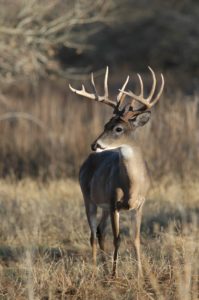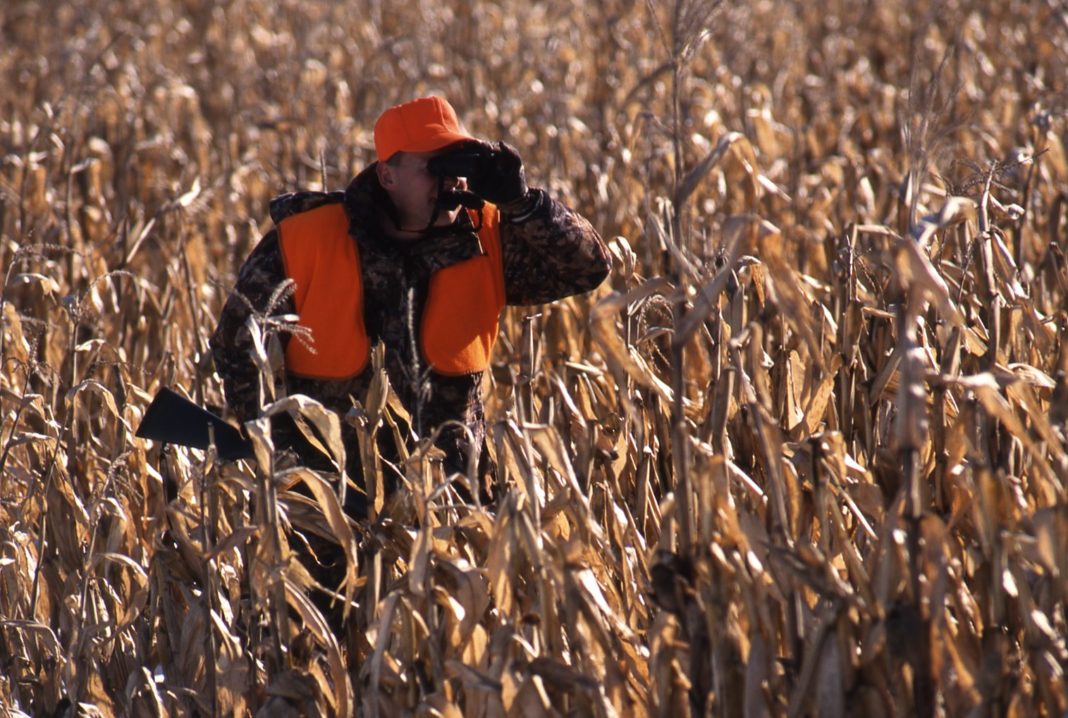Late season deer hunting can be one of the toughest or most predictable times of the year to hunt whitetail deer. If your only options are rugged mountains and non-agricultural areas, you’ll need to hike a bunch to find where deer are feeding, bedding and moving. Fortunately, snow often covers these are in the Northern Tier which helps tremendously when gathering information. In areas close to agricultural field, standing or harvested, deer movements will be much more predictable because whitetails will focus on food sources at this time of year. Food concentrates does which will also help motivate bucks to visit and check out yearling does that may come into estrous for the first time. This post from the Realtree network contains a video showing Mid-West hunters waiting over standing beans, a favored food of whitetail deer. Unharvested beans hold up well in bad weather and saving or planting plots for winter hunting is a great idea.
Hunting Strategies–
 Hunting food sources in late season usually means stand hunting, either from a tree or a ground blind. With forethought, you can use this latter ambush technique which aids tremendously in dealing with adverse weather conditions often associated with late season. Normally, you will want to deploy and brush in a ground blind two weeks before you hunt it, however, with a solid snow forecast in the future, you can post a blind, add branches to break up the silhouette and then wait for the white stuff to give your stand the same camouflage as the rest of the woods. Expect bucks to “stage” near the woodline as they do earlier in the year. They will enter a field to feed, but won’t give up the same instincts that have kept them alive. They’ll normally allow does and younger bucks to feed and then cautiously follow, so keep scent detection in mind when choosing a stand to hunt. As does precede a buck, they test the wind and if they spook that buck is gone. You’ll be more successful hunting ag areas if you understand the nutrition value of various winter food sources. Here’s a rundown on seven:
Hunting food sources in late season usually means stand hunting, either from a tree or a ground blind. With forethought, you can use this latter ambush technique which aids tremendously in dealing with adverse weather conditions often associated with late season. Normally, you will want to deploy and brush in a ground blind two weeks before you hunt it, however, with a solid snow forecast in the future, you can post a blind, add branches to break up the silhouette and then wait for the white stuff to give your stand the same camouflage as the rest of the woods. Expect bucks to “stage” near the woodline as they do earlier in the year. They will enter a field to feed, but won’t give up the same instincts that have kept them alive. They’ll normally allow does and younger bucks to feed and then cautiously follow, so keep scent detection in mind when choosing a stand to hunt. As does precede a buck, they test the wind and if they spook that buck is gone. You’ll be more successful hunting ag areas if you understand the nutrition value of various winter food sources. Here’s a rundown on seven:
The late season can be a bear. It’s hard to find deer during the latter parts of the season. It doesn’t matter if you’re chasing giant bucks or fawns with milk-staches on their fuzzy lips (they taste pretty darn good). It’s tough, especially if you don’t have a dynamite spot. That aside, you can maximize your hunting efforts by focusing on quality food sources. The following seven options are some of the best known to modern deer and deer hunters.
Corn
This is likely the best agriculture-related food available to deer. It’s very high in carbs — something deer need to survive in cold weather. Sadly, most modern harvesting equipment drops very little waste grain. It isn’t like it used to be 15 or 20 years ago where a deer herd could pick over a cut cornfield all winter long. That said, some waste does hit the ground. And even where it doesn’t, some grain farmers don’t harvest until late in the winter. Standing corn is an excellent late-season food source.
Nutritional Value: Corn is low in protein, but high in carbs.









![The Best Deer Camp Chili [VIDEO] Deer Chili Ingredients, Tomatoes, Chili Spices](/wp-content/uploads/2015/10/Deer-Chili-Deer-Camp-Recipe-218x150.jpg)








![How to Call Elk Early in the Season [VIDEO]](/wp-content/uploads/2016/08/byers003-218x150.jpg)




![Idiots Disturb Hunter: How Would You Have Handled It? [VIDEO]](/wp-content/uploads/2015/10/DSC00110-e1474487693878-100x70.jpg)
![Albino Buck Shocked to Shed His Antlers [VIDEO]](/wp-content/uploads/2015/10/AlbinoDeer-100x70.jpg)